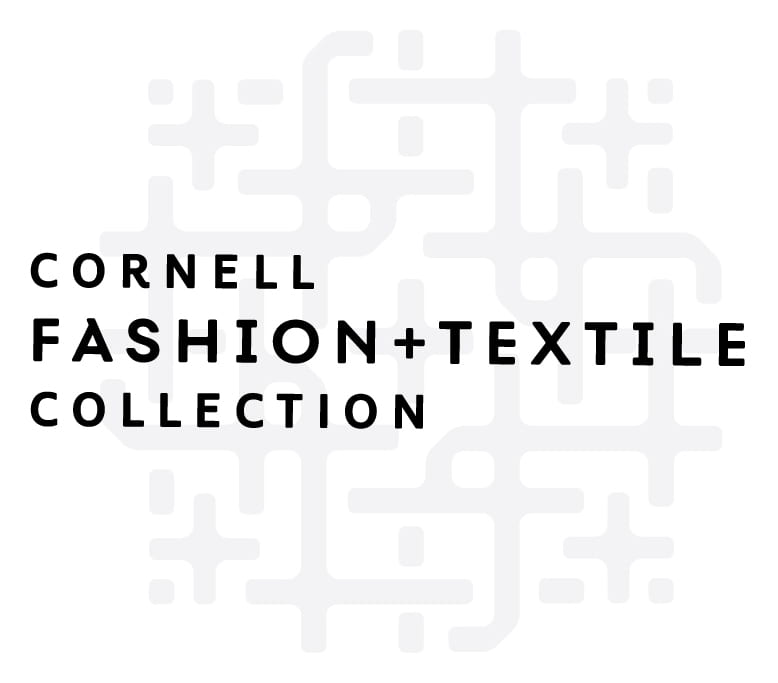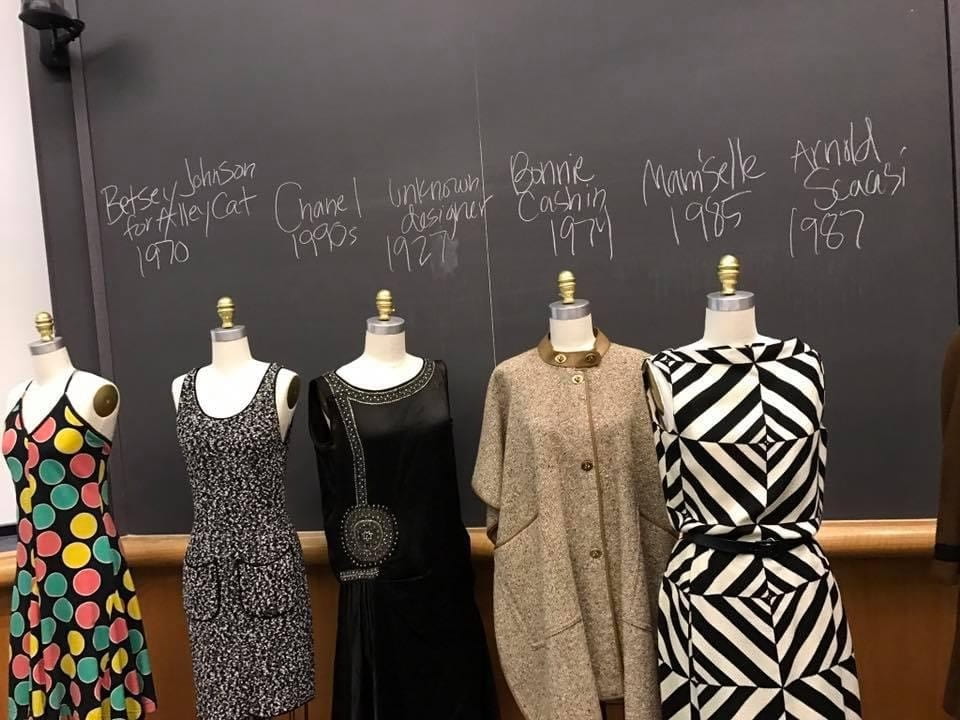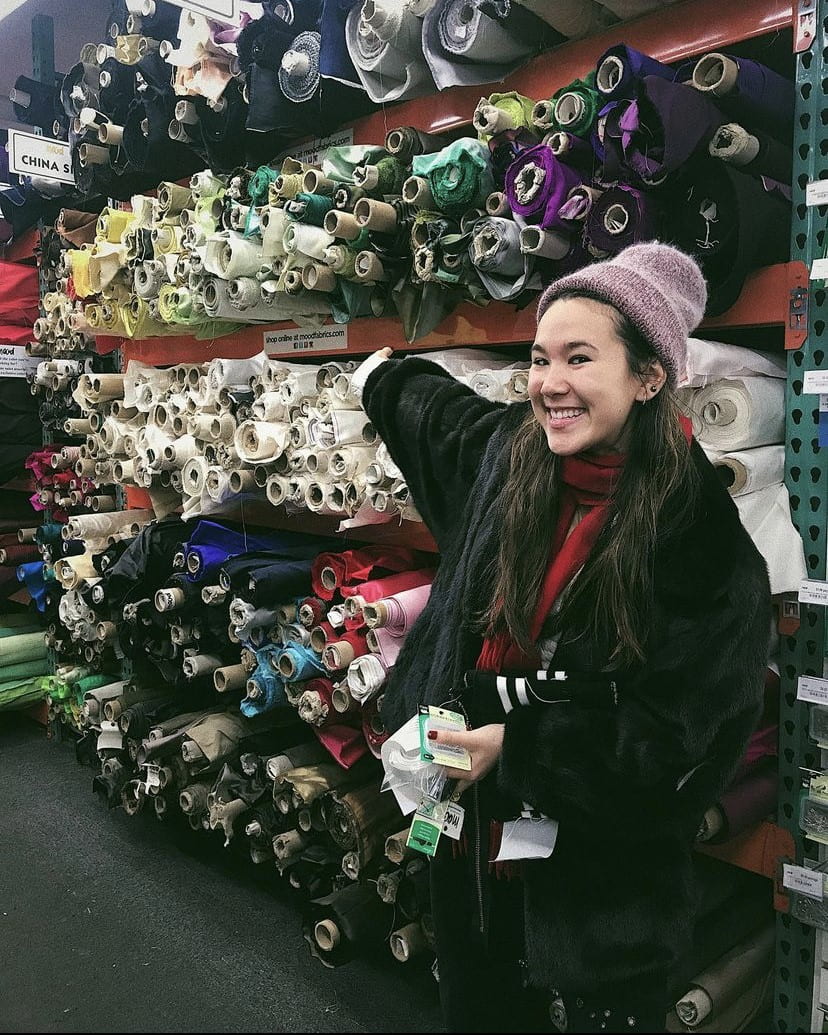Livia Caligor ’21 began working in the Cornell Fashion + Textile Collection as a first semester freshman and has continued to stay involved throughout her time at Cornell. She will graduate this weekend with a Bachelor’s of Science in Fashion Design Management and a minor in English. Read more below in our interview with Livia!
What inspired you to join the CF+TC as a research assistant?
I joined the CF+TC as a research assistant one of my first weeks at Cornell! I remember we were learning about the elements of design in Professor Green’s Art, Design, and Visual Thinking class (FSAD 1250, now titled Fashion, Art, and Design Thinking), which remains one of my favorite classes I’ve taken in college to this day. Professor Green brought dresses dating back to the 1920s from the CF+TC to class to demonstrate how point and line can be used to create texture or cohesion, engage the viewer, exist as both a surface embellishment and a structural component, and even evoke emotion (See Figure 1). I specifically remember Professor Green pointing out a 1970s polka dot print Betsey Johnson dress that had misaligned dots due to a center seam running down the front of the dress. There was so much history, design, and topics for analysis in this simple slip dress. The dress incorporated the elements of design we were learning about not only in its print, but also in its very fabric, as it was an example of a woven bias-cut dress. Additionally, not only were the airy silhouette, bold print, and electric colors indicative of a 1970s shift towards more provocative and playful styles in womenswear, but its print was also very telling about the cost and production of the garment. Professor Green shared that the misaligned dress was considered a poor design and indicated a low production cost, but then suggested Johnson could’ve been intentionally challenging artistic norms. I was so excited by how much I learned through just one dress– I thought it was especially cool that it taught me how to use elements of design as a framework through which to analyze and question the designer’s intentions. Nothing seemed more amazing than the opportunity to surround myself with archives and consider these kinds of questions about fashion history every day, so, that day after class, I inquired about position openings in the collection!
What first sparked your interest in fashion history?
Growing up, I had always loved fashion history. I visited every one of the Met’s annual Costume Collection exhibits multiple times, read books about historic fashion designers and decade trends, and collected old magazine covers and prints. But it was my junior year final history paper that opened my eyes to a whole new level of complexity and meaning in the intersection of fashion and cultural studies.
My high school American History teacher, Mr. Michael Berkowitz, guided me through a research project on the emancipation of swimwear in the 1960s and its impact on Second Wave Feminism. In this paper, I analyzed how provocative trends during the Sexual Revolution, though marketed towards the male gaze, provided women with an unprecedented venue for empowerment, and how the legacy of the bikini, in particular, embodies the continuous tension between sexual expression and male subjugation. The project taught me how fashion can serve as both a tangible artifact of our rapidly-changing society and a vehicle for reform. It gave me a much more nuanced perspective on the social, cultural, and political implications of fashion trends throughout history.
When I visited the CF+TC college touring later that year, I immediately fell in love with the collection. I remember walking through the aisles and seeing fabrics, textures, prints, and silhouettes from every historical era conceivable– it felt like my dreamland! I was so excited– the idea of being able to visit the CF+TC regularly was one of the deciding factors that made Cornell my top choice school and motivated me to apply early to FSAD. As soon as I came to campus freshman year, I applied to join CF+TC as a research assistant. Of course, the first artifact I wanted to see was a 1940s bikini! (See Figure 2)
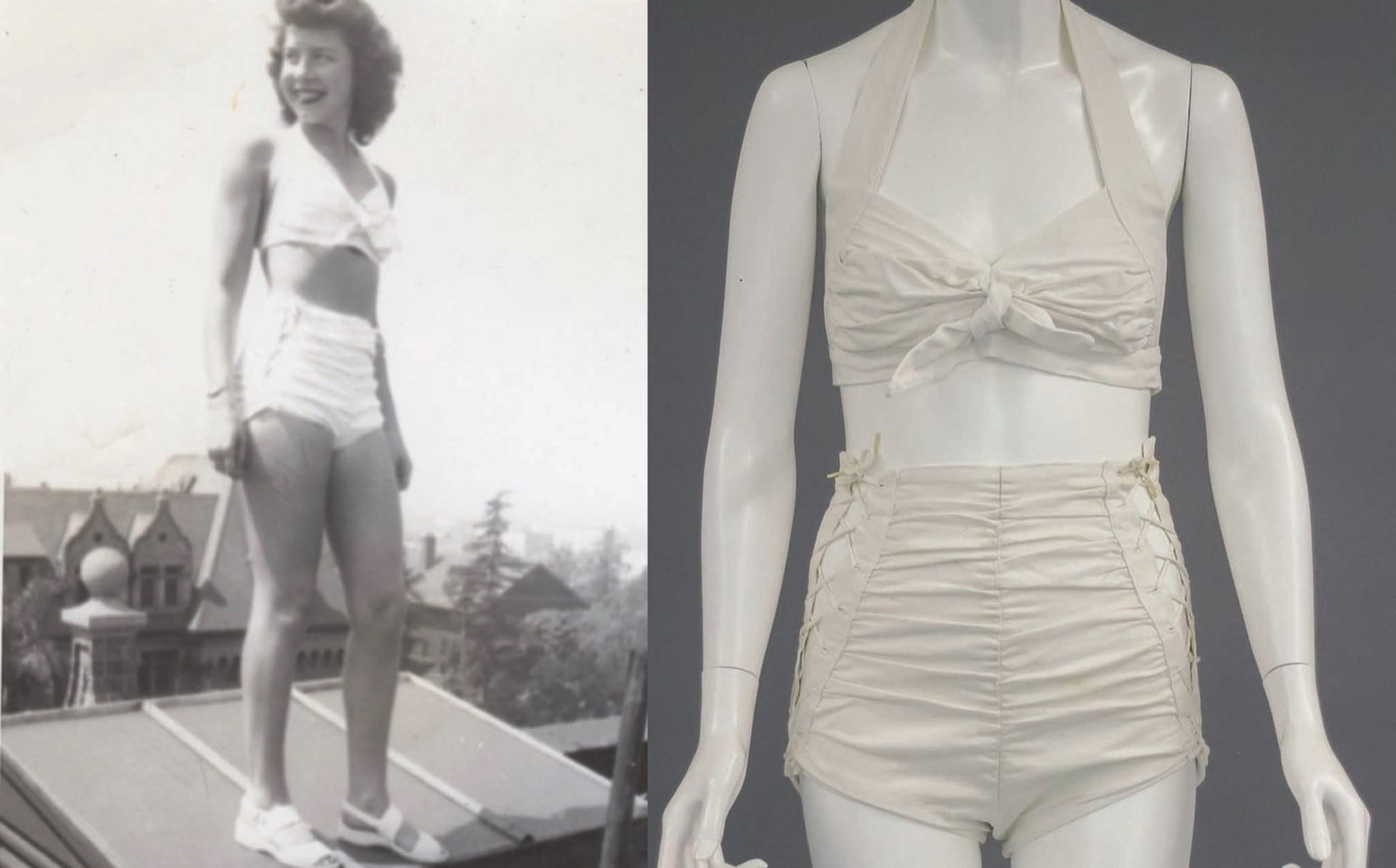
Figure 2. Two-piece bathing suit worn by Billijean Heneghan in 1945. Gift of Patricia Orr, CF+TC # 2015.24.001ab
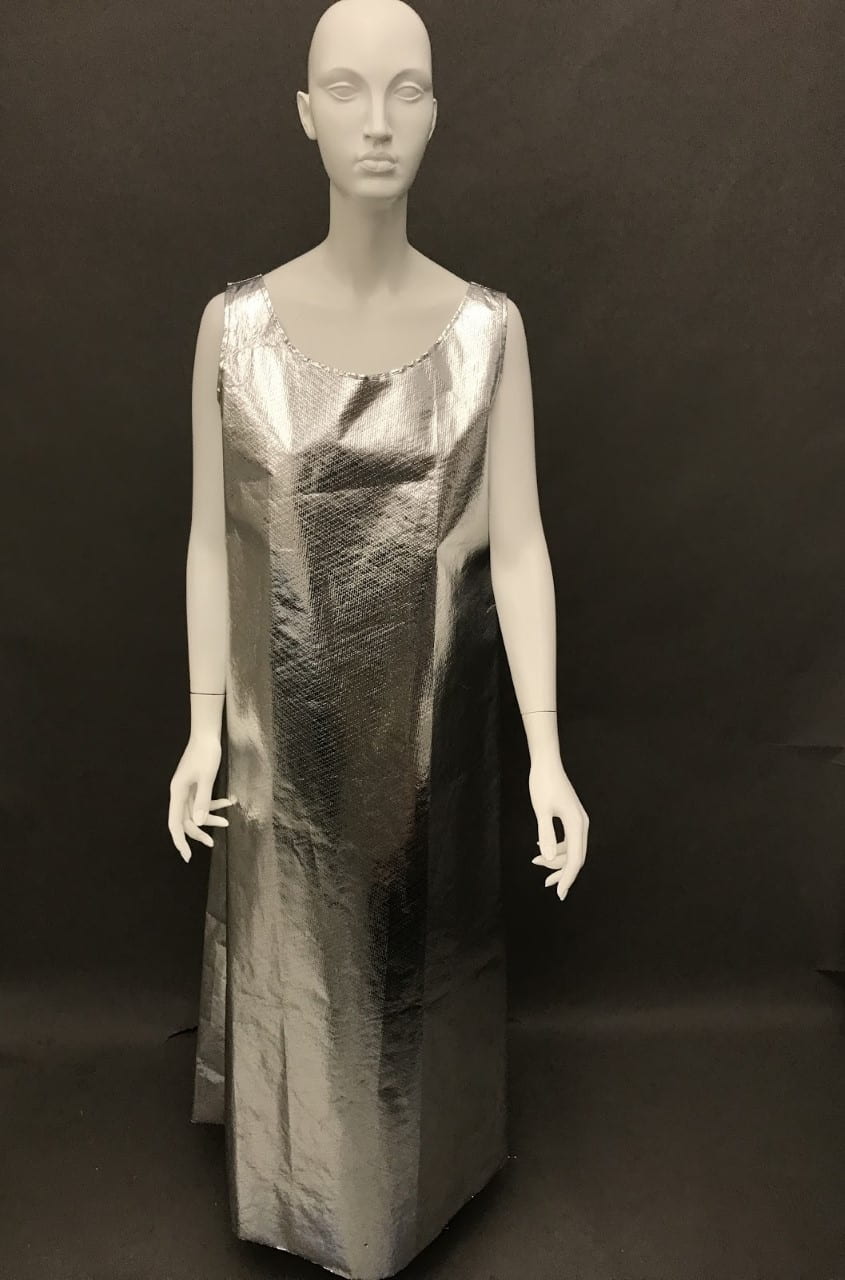
Figure 3. Mars of Asheville paper dress from “The Wastebasket Boutique” collection, circa 1969. Gift of Susan Greene, CF+TC # 2005.41.01
What is your favorite piece in the collection and why?
Aside from the incredible swimwear collection, my favorite piece is the Mars of Asheville 1966 paper dress (See Figure 3)! I wrote a blog post on this piece my freshman year. I am very interested in social responsibility, so when I first learned about paper fashion, a movement in which designers created cheaply-produced paper clothing to keep up with ephemeral trends, I was immediately interested in exploring its impact on the fast fashion industry today. This Space Age gown is cutting edge, not only because it is a floor-length garment made of aluminum foil, but also because it reflects a huge cultural shift towards disposable consumption. It was fascinating to the economic and cultural implications of the paper fashion trend and its lasting impact on the industry to this day.
If you were to donate one item from your personal wardrobe to the collection, what would it be and why?
Anybody who knows me likely knows that I wear an oversized, black fur coat every winter, all day and every day (See Figure 4). I wear it to the library, layered over a sweatsuit, I wear it on my way to the gym, keeping me warm in the brutal Ithaca winters, and I wear it to events, always the final touch to my outfit. Purchased by my mom in 1999, my birth year, in a second-hand shop for less than $40.00, this coat is made entirely of mink and is lined with a black brocade. When I asked my mom what motivated her to purchase such an extravagant piece on the whim, she said that she “always loved the thought of fur coats growing up. I read about them in books but never saw one in real life until I came to America… When I saw not just a fur coat, but a mink coat, I knew I had to buy it.” She also added that “it seemed so New York to me– sleek, black, and glamorous.” Growing up, I was obsessed with this coat and always asked if I could borrow it when I grew up. In high school, I wore it upon occasion, but it wasn’t until college that she gave it to me to keep. To this day, it is the warmest piece I own, and I never leave my home without it. After almost 20 years of regular wear, the lining now tears every winter and requires a lot of resewing and seasonal revamping. Sometimes the sleeves split apart and even the collar falls off, but I refuse to let it go because I can’t imagine stepping out of my apartment in the winter without it. Though fur is controversial today, I believe that this kind of animal product is the most sustainable way to consume and wear a garment, especially since synthetic furs are worse for the environment. I am excited to hopefully wear this for many more years and pass it on to my kids too one day.

Figure 5. “Fashion for a Cause” runway show held in September 2017. From left to right, Kyra Streck, Mollie Tobin, and Livia Caligor.
What has been your most meaningful experience working in the CF+TC?
That’s a hard one! So many of my most cherished memories at Cornell lay in the aisles of the collection. I really enjoyed speaking on the phone with Cornell alum Dorothy Schefer (‘69), who went on to become a renowned fashion and beauty editor at Vogue. She is one of the collection’s biggest donors– countless garments, shoes, and accessories from prominent designers were her generous donations. It was such an honor to have the opportunity to learn from her career path and speak more about the importance of conserving and studying fashion archives.
Another fun memory is from freshman year, when Professor Green organized the CF+TC’s “Fashion for a Cause” runway show and silent auction event in NYC, where alumni modeled deaccessioned pieces that were sold to raise money for the collection. As a freshman, it was so cool to meet so many FSAD alumni at various stages in their career paths, and it was such an honor and one-of-a-kind experience to model a historic dress (See Figure 5).
What are your career goals and how do they connect to the work you did in the CF+TC?
I would really love to work in fashion journalism or media one day! I hope to fuse my experiences in the business side of fashion with my passions for cultural studies and current events and explore issues of sustainability, diversity, and social reform in fashion. There is nothing I love more than analyzing and writing about fashion — the way a fashion trend can be a catalyst for reform or a representation of our rapidly-changing society. I feel so fortunate to have had the opportunity to study, analyze, and curate historical garments working in the CF+TC and have grown so much from using them as a framework through which to study art and history.
I view fashion, both historical and contemporary, as a non-verbal language that communicates what it means to be human– not only is it a form of individual self-expression, but it’s a form of material culture: it is a representation of our culture and society at a moment in history. Though fashion is such a beautiful and intricate art form, the industry today is far from perfect. Much of the industry is dependent upon the exploitation of labor and environmental resources and the appropriation of small businesses and marginalized communities. Though it has the capacity to be a driving force for reform, fashion is in many ways an exclusive, inaccessible, and regressive industry. It is the second most polluting industry in the world and profits at the hands of 170 million children engaged in child labor in developing countries. The corporate world, too, perpetuates regressive beauty standards and hierarchies. So much in fashion needs to change, and I believe writing is one of the most powerful agents for raising consumer awareness and enacting change.
